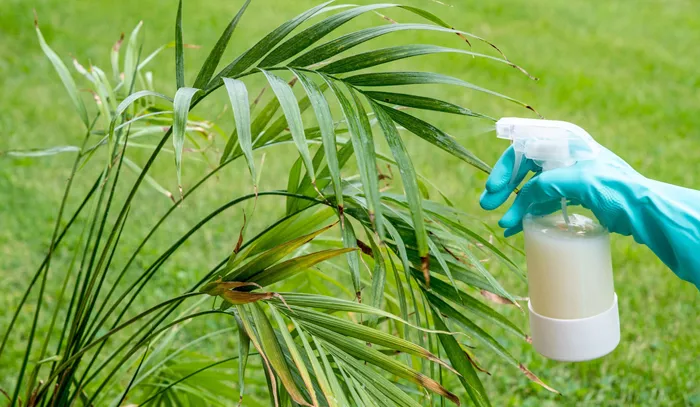Neem oil is a natural pesticide that many gardeners use to control pests on indoor and outdoor plants. It is effective against insects like spider mites, aphids, and whiteflies. It also helps prevent fungal issues such as mildew and black spot. However, neem oil is not suitable for every houseplant. Some plants are too delicate to handle neem oil, and using it can lead to leaf burn, discoloration, or stunted growth.
In this article, we’ll explore which houseplants do not respond well to neem oil and why. If you love your indoor plants, it’s important to know when neem oil is helpful—and when it can cause more harm than good.
What Is Neem Oil and How Does It Work?
Neem oil comes from the seeds of the neem tree, which grows mainly in India. It contains a natural compound called azadirachtin, which disrupts the life cycle of insects. This makes it hard for them to grow, feed, or lay eggs.
Neem oil can be used in two ways:
- As a foliar spray (on leaves)
- As a soil drench (poured into the soil)
Both methods are popular, but spraying directly on leaves is the most common way houseplant owners use it.
The Problem with Neem Oil on Sensitive Plants
While neem oil is safe for many plants, some indoor plants have tender or fuzzy leaves that can react badly to the oil. These sensitive leaves may become burned, yellow, or drop off after being sprayed. That’s because neem oil can block pores (called stomata) on leaves or create a coating that irritates them.
Other problems include:
- Sunlight sensitivity: Neem oil can make leaves more likely to burn under bright light.
- Overuse damage: Too much neem oil can stress or kill a sensitive plant.
- Allergic reaction: Just like people, some plants simply don’t “agree” with neem oil.
Houseplants That Don’t Like Neem Oil
Below is a list of common houseplants that often show negative reactions to neem oil. If you own these plants, use neem oil with caution—or avoid it completely.
1. Ferns
Ferns, especially delicate types like Boston fern or Maidenhair fern, have very fine and sensitive fronds. Neem oil can burn these soft leaves quickly. It may cause them to curl, brown, or fall off even after one light spray.
2. African Violets
These charming flowering plants have hairy leaves that do not absorb oil well. Instead, neem oil tends to sit on the surface, which can clog pores or cause fuzzy mold. African violets are also prone to leaf spotting when sprayed with oil.
3. Begonias
Begonias have waxy or textured leaves that are sensitive to oil. Neem oil can lead to spotted leaves, wilting, or a sticky residue that doesn’t wash off easily. These plants also don’t handle strong sprays well.
4. Calatheas and Marantas (Prayer Plants)
Calatheas and other prayer plants are known for their delicate, colorful foliage. They often react to neem oil with leaf curling, yellowing, or dry patches. Because they need high humidity and low light, neem oil tends to build up on their leaves instead of drying quickly.
5. Succulents and Cacti
Succulents like Echeveria, Jade, Aloe Vera, and small cacti are poor candidates for neem oil sprays. These plants store water in their leaves, and neem oil can block respiration or cause soft rot if it doesn’t evaporate quickly.
6. Sensitive Herbs (like Dill, Parsley, and Basil)
Herbs grown indoors for cooking may react badly to neem oil. Basil and dill, in particular, may develop spotted or burnt leaves. If you’re growing herbs indoors, it’s better to wash pests off or use insecticidal soap instead of neem.
How to Test Before Using Neem Oil
If you’re unsure whether a plant will react well to neem oil, always perform a patch test:
- Dilute the neem oil as directed (usually 1-2 teaspoons per quart of water).
- Spray just one or two leaves.
- Wait 24–48 hours.
- Check for any signs of burning, yellowing, or spotting.
If the test leaves remain healthy, you can spray the whole plant. If not, avoid using neem oil on that plant.
Safe Alternatives to Neem Oil
If your plant doesn’t tolerate neem oil, you still have options for pest control. Try these safer methods:
1. Insecticidal Soap
This is a plant-safe soap that kills soft-bodied insects like aphids and mealybugs. It’s less oily and easier on sensitive leaves.
2. Rubbing Alcohol (Diluted)
A solution of 70% isopropyl alcohol and water (1:1 ratio) can be dabbed onto pests with a cotton swab. This is great for small infestations on succulents or violets.
3. Water Spray
For tough plants, a strong stream of water in the sink or shower can dislodge pests. This works well for spider mites and aphids.
4. Manual Removal
Use tweezers or a soft cloth to wipe off bugs. This takes time but is the safest method for delicate plants.
Tips for Using Neem Oil Safely on Houseplants
If your plant can handle neem oil, follow these tips to avoid damage:
Dilute properly: Use pure neem oil with water and a few drops of dish soap as an emulsifier.
Spray in the evening: Avoid direct sun after spraying, as neem oil can cause leaf burn in bright light.
Use once a week: Don’t spray daily. Too much oil builds up and stresses plants.
Wipe leaves afterward: For fuzzy plants, gently wipe excess oil with a soft cloth after treatment.
Conclusion
Neem oil is a helpful tool for managing pests on many houseplants—but not all. Ferns, African violets, begonias, calatheas, succulents, and certain herbs don’t react well to neem oil and may suffer damage. Always test a small area before spraying an entire plant. And remember, there are many other pest control options that are safer for sensitive houseplants.
By knowing which houseplants don’t like neem oil, you can keep your indoor garden healthy and thriving—without any oily surprises.


